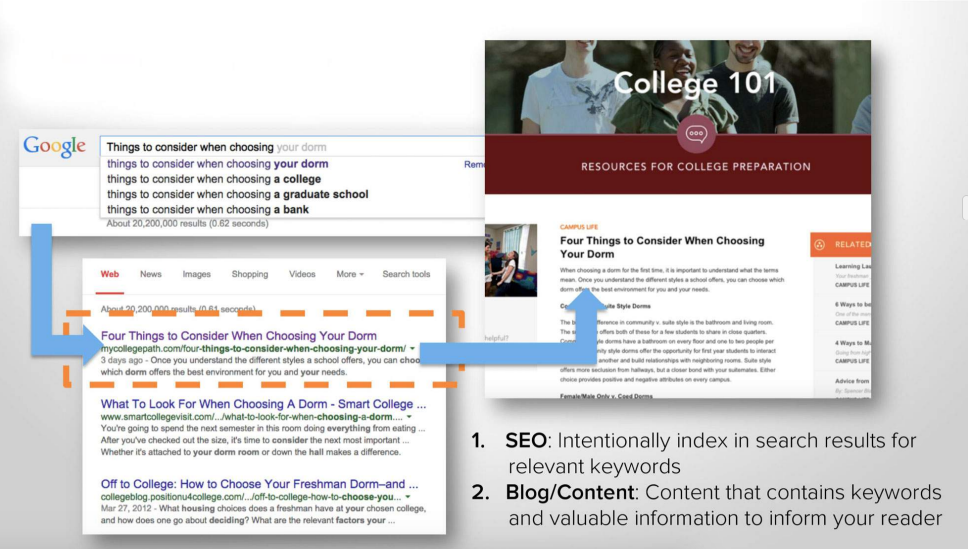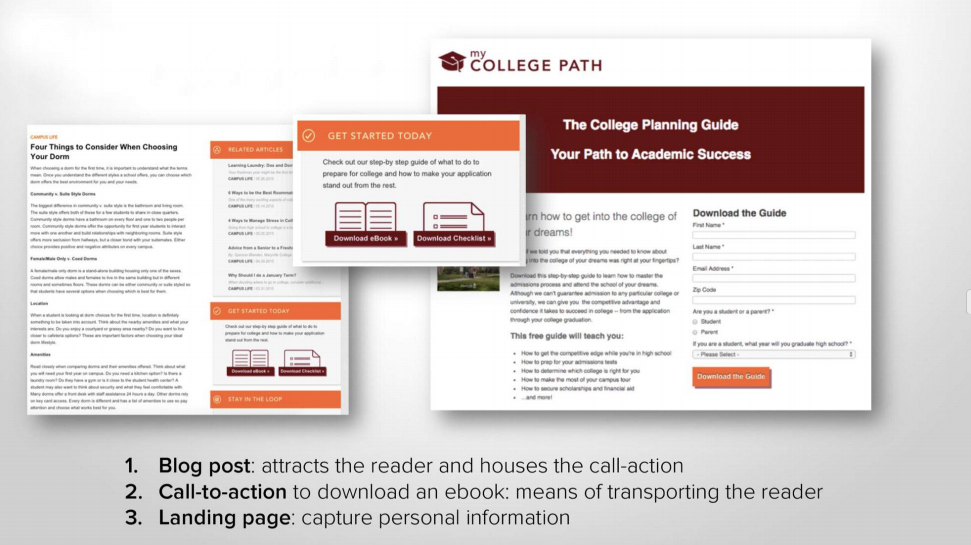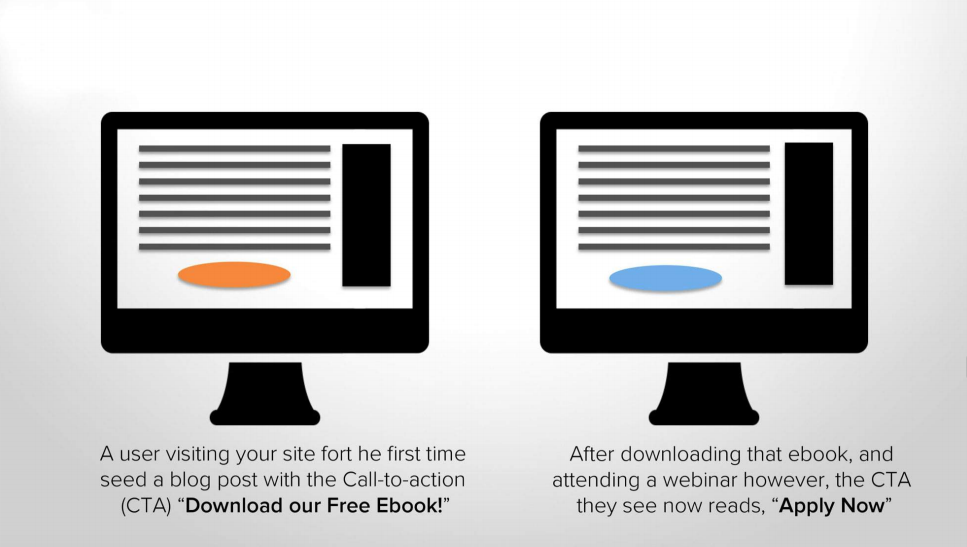Marketing for Higher Education has changed.
Prospective students and their parents now rely on the web as a primary source of research. Traditional marketing efforts like direct mail, radio, TV, and print ads are not effective.
Fortunately in 2018, Inbound Marketing can help you attract and convert prospective students in the most
In this post, I’m going to show you how to attract higher quality visitors to your website, turn them into prospects, and nurture them to apply to your university or college.
I will do this by explaining the 2 most important concepts you need to understand for your digital marketing success:
- The Buyer’s Journey
- The Inbound Marketing Methodology
How Can Higher Education Institutions Reach Prospective Students in 2018?
If you want to connect with potential undergraduate and graduate students today, you need to update the way you think about marketing and sales.
To attract students, higher education institutions must find a way to reach them early in the decision-making process, establish a relationship, and nurture that relationship until they decide to apply.
That’s where inbound marketing comes in. You need to create content that provides value to your prospective student at each stage of his or her journey to university.
What kind of content should you create? To know this, you first need to know:
- Who your ideal prospective students are
- Where they are in the decision-making process
- What value you can provide them at each of these stages
{{cta(‘91094f38-b618-459d-ba37-55a3ae29cc69′,’justifycenter’)}}
Introducing: the Buyer’s Journey
The buyer’s journey is the active research process your students (and their parents) will go through from the time they are in high school until they submit an application to your institution.
The buyer’s journey has 3 stages:
- Awareness – here, the prospect is experiencing and expressing symptoms of a problem or opportunity
- Consideration – by now, the prospect has clearly defined and named their problem or opportunity
- Decision – the prospect has decided on their solution, strategy, or method
How does this apply to a prospective applicant to your university? Think of the enrollment cycle:
- As a high school sophomore, the prospect thinks, “do I need a degree for the career I want to pursue?” and “do I need to attend a university or a trade school?”
- As a junior, “what should my major be?” and “where should I attend university?”
- As a senior, “do I have the grades to get into my first choice?” and “do I have enough scholarship money?”
Now, what you need to do is create content that solves the various problems a prospective applicant will have during the 3 stages.
Create Content for the Awareness Stage
Here, your goal is to get prospective applicants to visit your
You must consistently create keyword-rich content specific to the needs of your readers. These should live on your blog and other
In addition to this, promote the content you create on your various social media channels to get people to visit your website who would not have otherwise found you via search engines.
Here’s an example:

This image also shows one way you can research topics to write about:
Manually entering keyword phrases to see what people are searching for.
There are many other ways you can do research. For example:
- Using Google’s keyword planning tool to find out which keywords are being searched for according to volume
- Using Google trends to find out whether a particular topic is popular
- Scraping reviews from websites like yelp.com and whatuni.com
- Finding popular questions and topics on community websites like reddit.com and quora.com
- Using a tool like buzzsumo.com to find out which articles are most popular
in a given topic - Surveying and interviewing your existing students to understand why they applied to your institution
Nurture the Relationship During the Consideration Stage
The best way to establish and nurture a relationship with a prospective student is email marketing. To do this, you need your reader to give you their email address.
This is done by offering them a more in-depth or valuable piece of content (known as a lead magnet, content offer, or opt-in offer) in exchange for their email address.
Here’s an example:

To personalize your email marketing, you will need more information from them, like their location, their intended area of study, when they plan to apply, etc.
Once you have this information, you will send them emails with information and resources to nurture your relationship and help them make their decision.
It’s important to mention here that the content you send them during this stage isn’t meant to hard-sell them to apply to your institution.
Imagine you were advising your own son or daughter who will soon attend university. What would you want them to know to help them make an informed decision that is in their best interests?
That’s the type of content you need to create and provide them.
Make them take Action in the Decision Stage
For prospective university applicants, the decision stage will be in the months prior to application submission deadlines.
Here, you will send them
Your website content will also change to reflect this. Calls-to-action will prompt readers to start the application process, not opt-in for content.
Like so:

The process I have described, of using content to guide prospective students through the decision to apply to your university, has a name.
The Inbound Marketing Methodology
Inbound marketing helps you talk to the students you want to reach about topics they are interested in.

- Attract potential prospects to your website
- Convert potentials into prospects
- Nurture prospects into leads
- Close leads into customers
Each stage of this process requires you create content. Only the form of delivery changes – social media posts, blog posts, landing pages, content offers, email nurture sequences, email sales sequences, etc.
The inbound methodology is a system of implementing content marketing in a strategic way to achieve defined business objectives.
The Benefits of Inbound Marketing
Inbound marketing has at least 3 important benefits over traditional, “offline” marketing, and even some forms of digital marketing:
- Customer-centric – your focus is on serving your customer and providing them with solutions to their challenges instead of only selling your products and/or services
- Permission marketing – traditional marketing is “interruption marketing”; you are interrupting your customers’ day to sell to them. With inbound marketing, your customers seek you out on their own and give you permission to market to them
- Accurate measurement and reporting – there’s a popular saying in our business, “50% of your marketing budget is wasted; the problem is, no one knows which 50%”. Because it’s digital, the efficacy of your inbound marketing can be measured in minute detail. This means you can spend your budget more efficiently and maximize your ROI
How Do I Get Started With Inbound Marketing?
If I’ve convinced you that inbound marketing is the way to go, or if you have tried your hand at it and would like to do more and better, the first thing you must do is make sure your online infrastructure is ready to support it.
This means your website content, blog posts, social media posts, pay-per-click advertising, etc., need to be optimized for the inbound marketing methodology.
Once you have a deep and detailed understanding of your target audience, the decisions you make will be more clear.
And with digital marketing, clarity is #1 because confused prospects do not buy.
That’s why I’ve created a FREE guide for you called, “creating buyer personas for business.”
Not only will you get the guide, you also get templates you can use to start building your personas immediately.
Click on the button below to download your copy.
{{cta(‘6b1153a9-7cb8-4cdf-a952-c7bf28652432′,’justifycenter’)}}


